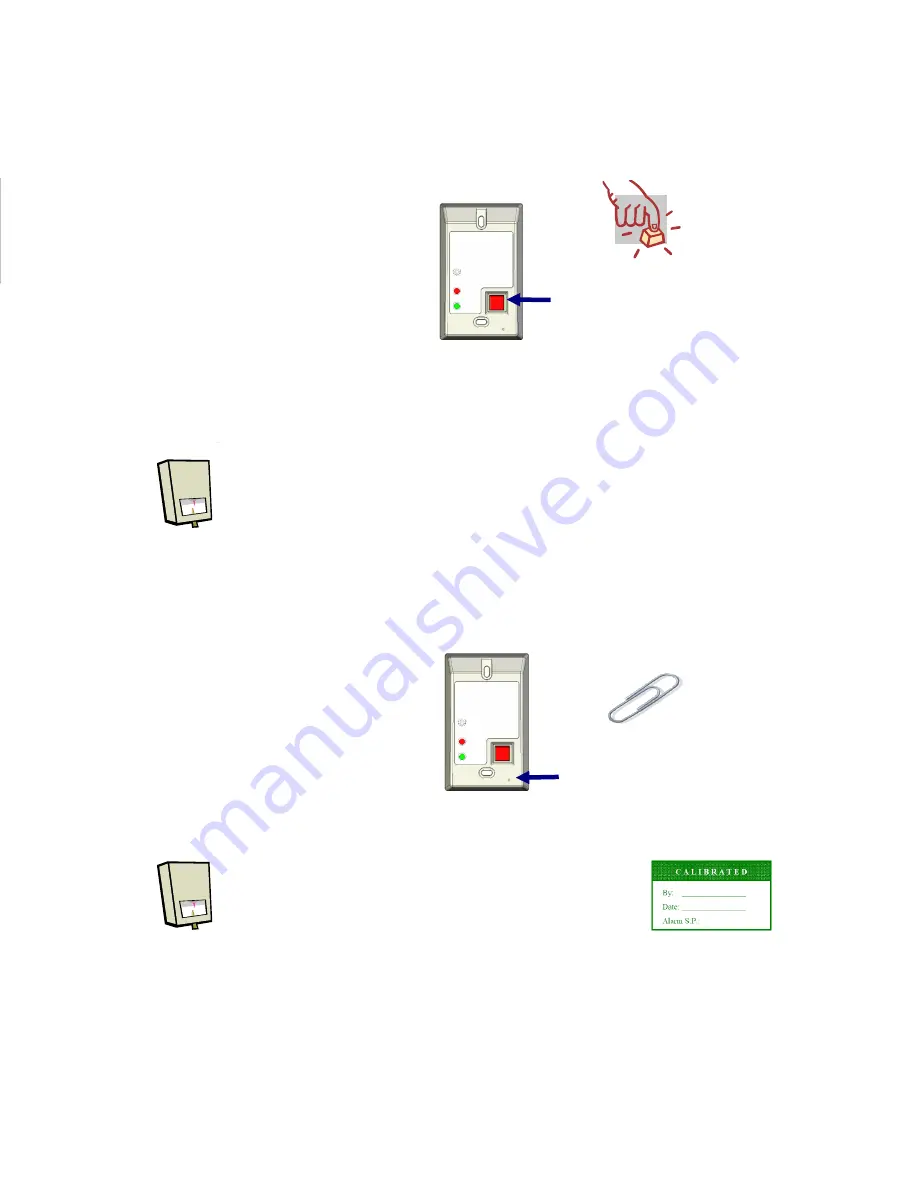
T-ABVA Manual |Rev.C, JULY 2017 Page 9
Calibration
Mode 2 Calibration
a.
Verify unit is operating in Calibration Mode 2.
b.
Once you have confirmed the Alarm is operating in Mode 2, adjust the exhaust flow volume or fume
hood sash to provide velocity 20% greater than the desired alarm set point.
c.
Using a calibrated velocity meter, measure the average airflow velocity using appropriate
ANSI/ASHRAE method.
If the measured velocity is 20% greater than the desired alarm set point, then proceed
to Step d. If not, then adjust exhaust flow or fume hood sash, and repeat Step c until
the desired velocity is achieved.
d.
To calibrate the alarm set point, press and hold the Calibration Button for 5 seconds, until you hear
two quick beeps, then release the Calibration Button and step away from the hood. You will now hear
a series of short fast beeps while the microprocessor is acquiring data from the sensor. After about
5-seconds, the buzzer will provide one longer beep to signify calibration set point has been stored.
e.
Verify the alarm set point is calibrated properly by modulating the exhaust volume or moving the fume
hood sash to achieve the desired alarm set point.
After calibration is verified, you may place a calibration
sticker over the Calibration Button to identify date of
calibration.
Maintenance
Routine maintenance or service is not required. The ABVA can be inspected and the alarm calibration
verified during the periodic Fume Hood or Bio Safety Cabinet performance certification. Inspection of the
ABVA should include; alarm calibration verification with re-calibration if required, visual hood probe
inspection and visual inspection of the inlet port on the front surface of the ABVA.
Press and Hold CAL
Button for 5-Seconds
Two LEDs ON = MODE 2
Press and Hold MUTE
Button for 3-Seconds

































